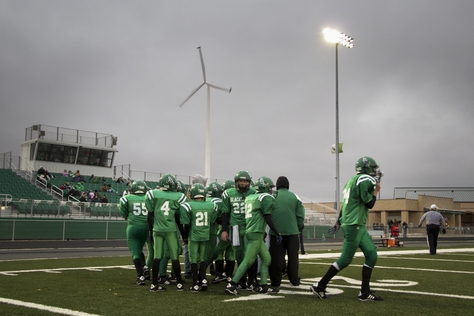
BLACKWELL, Tex. — When people complain about the weather here, Abe Gott, the school superintendent, just smiles.
A visit to the campus of the just over 160-student school district shows why. Behind the 1930s-era façade of the Blackwell school building 30 miles south of Sweetwater looms a distinctly 21st-century sight: a wind turbine. Energy development capitalizing on the high winds in the area — which quickly turned sunshine to chill rain one afternoon in late October — has injected sluggish rural communities with new economic lifeblood. More than one local resident has called it the “windfall,” and it has bestowed hundreds of millions of dollars on West Texas schools.
By the 2018-19 school year, Gott’s district will have received about $35 million from a deal it brokered with a wind farm company in 2005. On the school grounds, $15 million from a combination of bond and wind farm revenue has paid for a new football stadium and academic complex attached to the original school building. About $28 million sits in a foundation earmarked for scholarships; graduates receive $3,000 for each year they have spent in the district, which they can put toward any type of professional advancement, from a beauty school certificate to a bachelor’s degree. The influx of wealth has also enabled the district to buy an iPad for every student, starting in the seventh grade.
“What I wanted is, if you grew up in a town of 350 people in West Texas, that should not work against you,” Gott said. “We can send you to Harvard, we can send you to Baylor, we can send you to Texas Tech — we can send you anywhere because we have the pathway to get there.”
About 69 districts across Texas — mostly rural, tiny schools — continue to benefit from a now extinct quirk in the state’s school finance law that has led to what some consider an embarrassment of riches. How they spend the money, and the results they achieve with it, however, could be a valuable experiment in innovation in public education.
The money comes from a Chapter 313 agreement, which allows districts to offer breaks on property taxes for select manufacturing, technology and renewable-energy projects as part of the Texas Economic Development Act, which the Legislature passed in 2001. The law allowed districts to cap property appraisals so that businesses paid taxes on less than the full value of the property while the state largely offsets their resulting revenue loss.
For example, in Roscoe, just up the road from Blackwell, a wind company pays taxes on $10 million instead of on the property’s 2009 total estimated value of $378 million.
According to a 2010 report from the state comptroller’s office, 65 percent of those agreements are with renewable-energy companies, mostly wind farms. In 2009, the Legislature closed a loophole that allowed districts to negotiate unlimited side deals in which they received direct cash payments in lieu of taxes based on the savings companies received from the state economic incentives.
The side deals — and the inequity they perpetuated — led to a public outcry, and now such agreements are held to about $100 per student each year. To put that in perspective, school districts across the state spend an average of $8,572 to educate a student, according to a Texas Education Agency spokeswoman.
“Schools still get help; counties still get help — they just don’t get as much as they got during the old program,” said Joe Heflin, the former Democratic state representative from Crosbyton who wrote the bill closing the loophole.
Even without more money from wind companies, Heflin said, their presence still helps districts by technically allowing them to lower their taxes by adding more property value on the tax rolls.
Meanwhile, the investments that districts put in place with money from wind deals made before 2009 are beginning to make their mark. Because of programs that the Roscoe I.S.D. started the district received a grant from the Texas Education Agency’s Texas High School Project, making it the first model rural early-college high school in 2009.
Roscoe will receive a projected total of $11 million over 10 years. It has used the money to build a state-of-the-art academic facility — the Eon Center for Innovation and Higher Education, named for the Canadian alternative energy company that made it possible — and to hire instructional coaches, a new dean, and an early college director.
“What we didn’t want to do is get a two-year grant, and when the grant expires we can’t maintain the program,” Kim Alexander, the superintendent, said, adding, “Without the wind company, we would not have had the means to even enter into the early- college arena.”
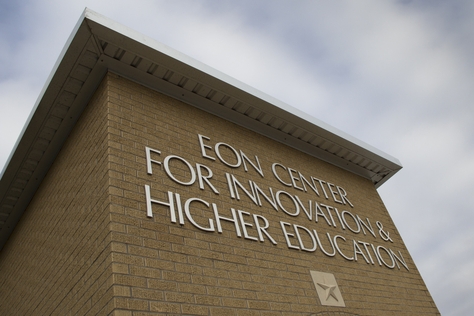
As an early-college school, Roscoe joins a handful of Texas schools that partner with local community colleges to let students begin taking college courses in ninth grade instead of in their junior year. Depending on how well they perform, students can graduate with an associate’s degree at no additional cost. The goal, Alexander said, is for 90 percent of Roscoe students to do that by 2015.
It is an undertaking made much more daunting by his projection that by that year, 90 percent of Roscoe students will be from low socioeconomic and English-language-learning backgrounds, making them some of the most challenging —and expensive — to educate.
As the program continues, the district, which has 369 students, is keeping track of its methods in the hope that they can be replicated elsewhere.
“We think it’s going to be a significant way to develop a model to break the poverty cycle,” Alexander said.
Moving forward, there are signs that even in their current, more limited form, Chapter 313 deals may be endangered. Late last year, the comptroller’s office released a critical report, saying the supplemental payments, even capped, may be an incentive for districts to enter into agreements that do not benefit the state. The report recommended ending such payments.
Dan Casey, a school finance expert whose consulting firm represents school districts in Chapter 313 deals, said he expected “substantial scrutiny” on all of the state’s economic incentive programs before the next legislative session, though he added that he thought the changes carried out in 2009 had already taken care of many concerns about the law.
For now, the new future of Chapter 313 money can be seen in Haskell County, the birthplace of Gov. Rick Perry, about 90 miles north of Roscoe, where the district is in the initial stages of an agreement that would mean approximately $60,000 more for the local schools.
The increase in property value could also make the Haskell district a Chapter 41 school, said Bill Alcorn, the district’s superintendent, meaning it would need to begin sharing its tax revenue with the state through Robin Hood laws. Still, Alcorn called the contract a “plus-plus” for the district.
“It may not be as lucrative as it was some years ago,” he said, “but it’s in the contract that we will in no way be worse off than what we would have been without it. It gives us options of floating a bond, building something, letting the wind farm company pay for some things.”
Energy development capitalizing on the high winds in West Texas has injected its sluggish rural communities with new economic lifeblood. The “windfall” has also bestowed hundreds of millions of dollars on West Texas schools. A now extinct quirk in school finance law has led to what some consider an embarrassment of riches for these mostly tiny, rural schools — but how they spend the money, and the results they achieve with it, could amount to a valuable experiment in innovation in public education.
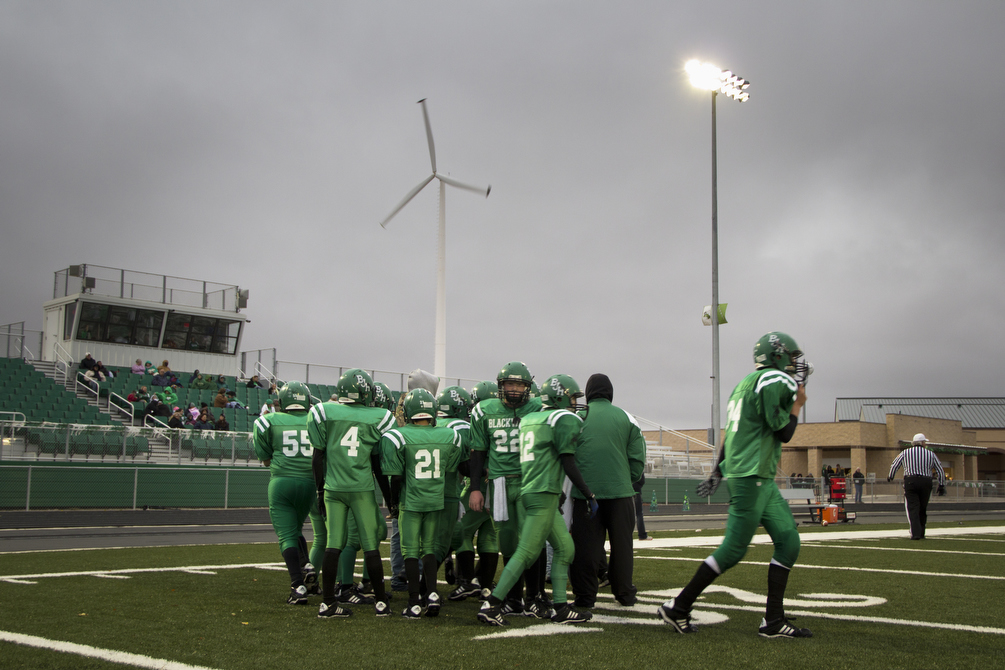


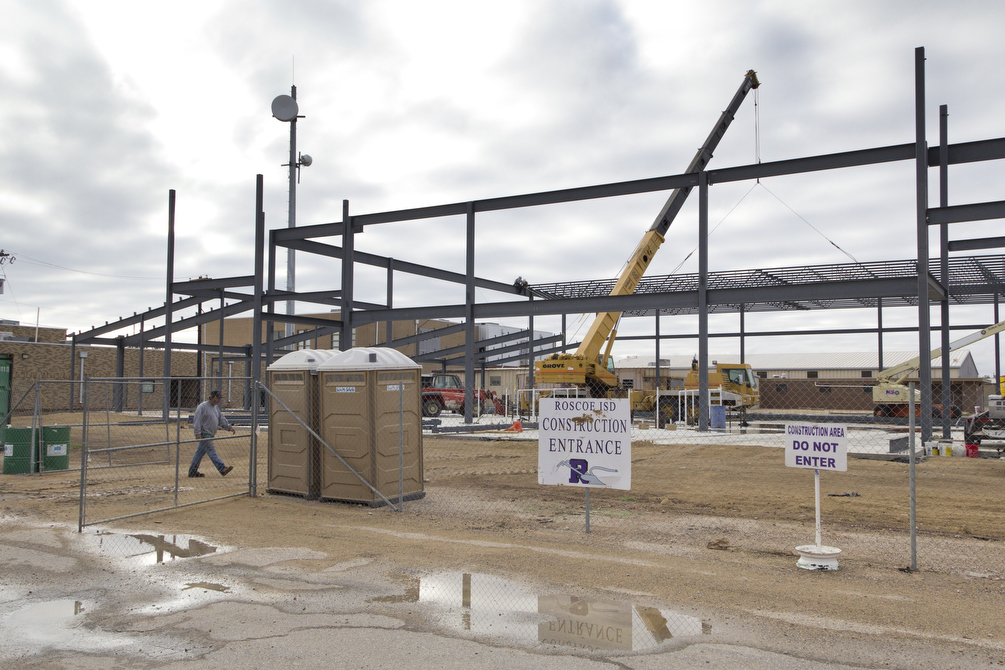

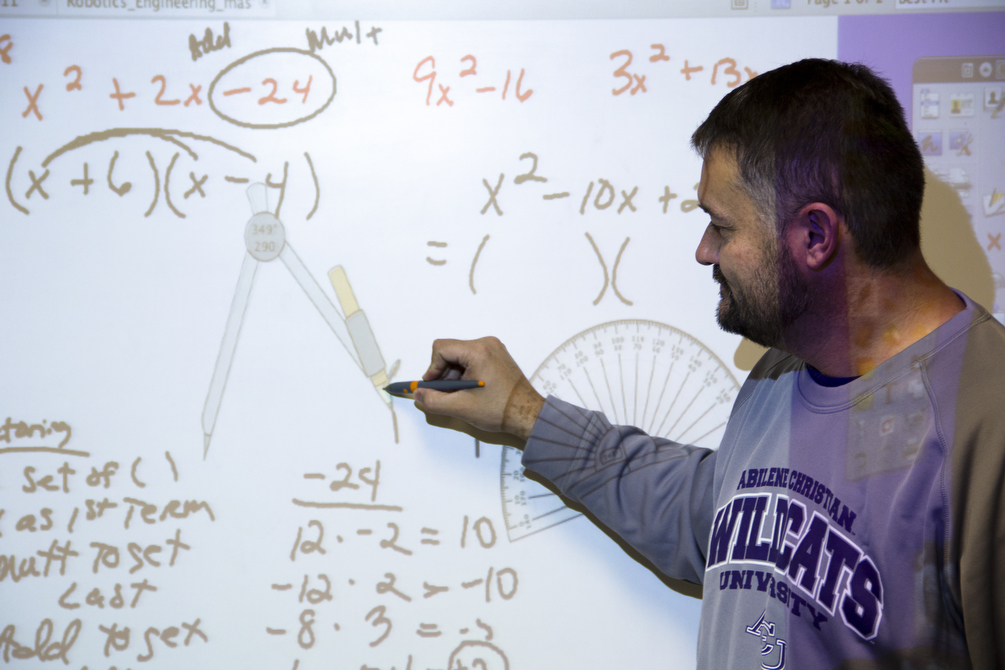



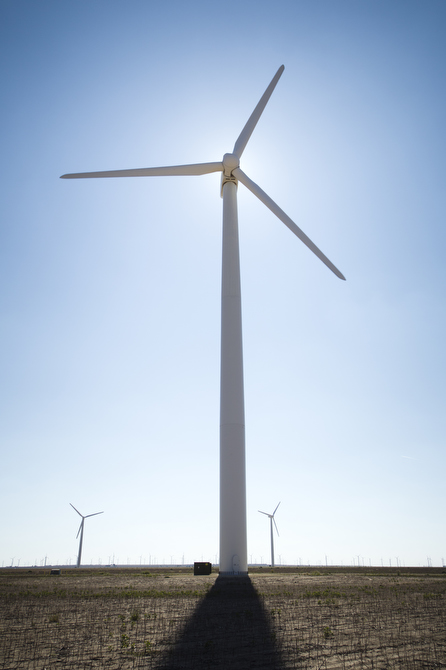
Click on a school district on the map below to see the total supplement amount it is projected to receive. Use the table below the map to view the individual deals of each district that add up to represent the total amount.
* School districts send supplemental payment information in biennial data forms. The last set of biennial forms were filed Aug. 2010. "N/A" means the agreement became active after Aug. 2010.
| District | County | Agreement Holder | Estimated Supplemental Payments |
|---|---|---|---|
| Albany ISD | Shackelford County | Hackberry Wind LLC | $6,420,685 |
| Blackwell CISD | Nolan County | Sweetwater Wind Power LLC | $2,402,722 |
| Blackwell CISD | Nolan County | FPL Energy Horse Hollow Wind GP LLC | $13,939,490 |
| Blackwell CISD | Nolan County | Buffalo Gap Wind Farm LLC | $13,051,756 |
| Blackwell CISD | Nolan County | Buffalo Gap Wind Farm LLC and SeaWest WindPower Inc. | $796,259 |
| Blackwell CISD | Nolan County | Turkey Track Wind Enegy LLC | $4,771,979 |
| Borden County ISD | Borden County | Bull Creek Wind LLC | $4,536,023 |
| Brackett ISD | Kinney County | EC&R Development LLC | $563,066 |
| Bryson ISD | Jack County | Barton Chapel Wind LLC | $3,569,256 |
| Bryson ISD | Jack County | Senate Wind, LLC | *N/A |
| Buena Vista ISD | Pecos County | Sherbino II Wind Farm, LLC | *N/A |
| Christoval ISD | Tom Green County | Langford Wind Power, LLC | $2,257,136 |
| Clyde CISD | Callahan County | Mesquite Wind LLC | $9,818,053 |
| Dumas ISD | Moore County | Valero Energy | $0 |
| Forsan ISD | Howard County | Elbow Creek Wind Project LLC | $3,699,531 |
| Forsan ISD | Howard County | Ocotillo Windpower LP | $1,925,520 |
| Forsan ISD | Howard County | Airtricity Panther Wind Farm LLC | $1,122,582 |
| Glasscock County ISD | Glasscock County | Airtricity Panther Wind Farm LLC | $8,582,762 |
| Grady ISD | Martin County | Stanton Wind Energy LLC | $400,639 |
| Graham ISD | Young County | Senate Wind, LLC | *N/A |
| Gregory-Portland ISD | San Patricio County | EC&R Papalote Creek II, LLC | $2,878,253 |
| Gruver ISD | Hansford County | JD Wind 1-2-3-4 LLC (Great Plains Windpower LLC) | $2,573,670 |
| Gruver ISD | Hansford County | North Texas Wind Center LLC | $3,768,298 |
| Hermleigh ISD | Scurry County | WKN Texas LLC | $1,758,332 |
| Hermleigh ISD | Scurry County | Scurry County Wind LP | $2,245,502 |
| Hermleigh ISD | Scurry County | Airtricity Pyron Wind Farm LLC | $8,425,498 |
| Highland ISD | Nolan County | Sweetwater Wind Power LLC | $84,623 |
| Highland ISD | Nolan County | Sweetwater Wind Power LLC | $10,741,496 |
| Highland ISD | Nolan County | Airtricity Champion Wind Farm LLC | $2,598,351 |
| Iraan-Sheffield ISD | Pecos County | BP Alternative Energy | $4,456,339 |
| Iraan-Sheffield ISD | Pecos County | Texas Land Partners | $7,428,213 |
| Irion County ISD | Irion County | Langford Wind Power, LLC | $275,270 |
| Jim Ned CISD | Taylor County | FPL Energy Horse Hollow Wind GP LLC | $5,263,612 |
| Kenedy County Wide CSD | Kenedy County | Heartland Wind LLC ( a subsidiary of PPM Energy Inc.) | $4,403,364 |
| Kermit ISD | Winkler County | Notrees Windpower | $4,663,180 |
| Lingleville ISD | Erath County | Silver Star Power Partners LLC | $2,210,948 |
| Loraine ISD | Mitchell County | Airtricity Roscoe Wind Farm LLC | $3,170,515 |
| Loraine ISD | Mitchell County | Loraine Windpark Project LLC | $4,844,110 |
| Lyford CISD | Willacy County | EC&R Development, LLC | $84,462 |
| Midway ISD | Clay County | Horn Wind, LLC | *N/A |
| Muenster ISD | Cooke County | Wolf Ridge Wind LLC | $4,124,357 |
| Odem-Edroy ISD | San Patricio County | EC & R Papalote Creek I, LLC | $2,038,748 |
| Olney ISD | Archer and Young Counties | BP Wind Energy North America Inc. | *N/A |
| Panhandle ISD | Carson County | Babcock & Brown Renewable Holdings Inc. | $4,046,839 |
| Pringle-Morse CISD | Hutchinson County | DeWind SWI Wind Farms | $1,026,484 |
| Raymondville ISD | Willacy County | EC&R Development, LLC | $109,961 |
| Robert Lee ISD | Coke County | Goat Wind LP (c/o Edison Mission Energy) | $4,169,757 |
| Robert Lee ISD | Coke County | Capricorn Ridge Wind II LLC | $1,951,898 |
| Roscoe ISD | Nolan County | Airtricity Champion Wind Farm LLC | $14,162,226 |
| San Perlita ISD | Willacy County | EC&R Development, LLC | $383,366 |
| Schleicher ISD | Schleicher County | Langford Wind Power, LLC | $598,199 |
| Sinton ISD | San Patricio County | EC & R Papalote Creek I, LLC | $2,077,860 |
| Snyder ISD | Scurry County | Scurry County Wind LP | $3,293,129 |
| Spur ISD | Dickens County | McAdoo Wind Energy LLC | $4,852,602 |
| Stanton ISD | Martin County | Stanton Wind Energy LLC | $2,470,374 |
| Sterling City ISD | Sterling County | Airtricity Forest Creek Wind Farm LLC | $5,211,116 |
| Sterling City ISD | Sterling County | Goat Mountain Wind LP | $25,063,597 |
| Sterling City ISD | Sterling County | Goat Wind LP (c/o Edison Mission Energy) | $142,908 |
| Sterling City ISD | Sterling County | EC & R Panther Creek Wind Farm | $7,234,020 |
| Sunray ISD | Moore County | JD Wind 7 LLC; JD Wind 8 LLC; JD Wind 9 LLC | $1,113,506 |
| Sweetwater ISD | Nolan County | Sweetwater Wind Power LLC | $1,658,579 |
| Taft ISD | San Patricio County | EC & R Papalote Creek I, LLC | $2,884,864 |
| Taft ISD | San Patricio County | EC&R Papalote Creek II, LLC | $1,535,300 |
| Trent ISD | Taylor County | South Trent Wind LLC | $2,122,373 |
| Vega ISD | Oldham County | Wildorado Wind LP (converting to LLC) | $1,699,824 |
| Vega ISD | Oldham County | Spinning Spur Wind LLC | *N/A |
| Webb ISD | Webb County | Cedro Hill Wind LLC | $319,000 |
| Wildorado ISD | Oldham County | Wildorado Wind LP (converting to LLC) | $3,747,987 |
| Wildorado ISD | Oldham County | Wildorado Wind LP (converting to LLC) | $1,884,896 |
The Texas Tribune is pleased to provide the opportunity for you to share your observations about this story. We encourage lively debate on the issues of the day, but we ask that you refrain from using profanity or other offensive speech, engaging in personal attacks or name-calling, posting advertising, or wandering away from the topic at hand. To comment, you must be a registered user of the Tribune, and your real name will be displayed. Thanks for taking time to offer your thoughts.

Comments (6)
Erin Anderson via Texas Tribune on Facebook
A school district with 160 students spends $3 Million on a football stadium? Schools don't need more MONEY, they need more SENSE!
William Leavenworth
This should be an inspiration to rural school districts everywhere. However, please don't signal "School" with a football trope. Our international competition doesn't have varsity sports; they subsidize their university and graduate school classrooms and labs. If we keep on making sports the focal point of our education systems nationwide, we will end up providing gladiators to entertain our economic superiors in Europe, and those who can't make the grade as athletes will be menial wage-slaves to European and Asian owners.
Stanley Moore via Texas Tribune on Facebook
What intelligent kid would want to wind up in Lubbock? Geez!
Jaxon Heath
Wow, some lady from Houston reads this story and all she gets out of it is the price of a football stadium? Obviously soemone who hasn't built a large structure in a while. Anyway, it's great what these schools are doing with their academics (read more closely Erin.) I also praise these districts for helping kids go to college or job training. I also watched the video and I hope all districts are helping students like those mentioned. What a amazing story for students. Too bad people like to be so negative.
Debbie Spencer via Texas Tribune on Facebook
The Texas path to college begins in Mexico.
Dee Hagerty
Thanks a lot, this really is a truly awsome article! I also can share my experience in filling forms. I am sure at least once in your life you had to fill out a form. I use a simple service "http://goo.gl/cD7Frk" for forms filling. It definitely makes my life easier!